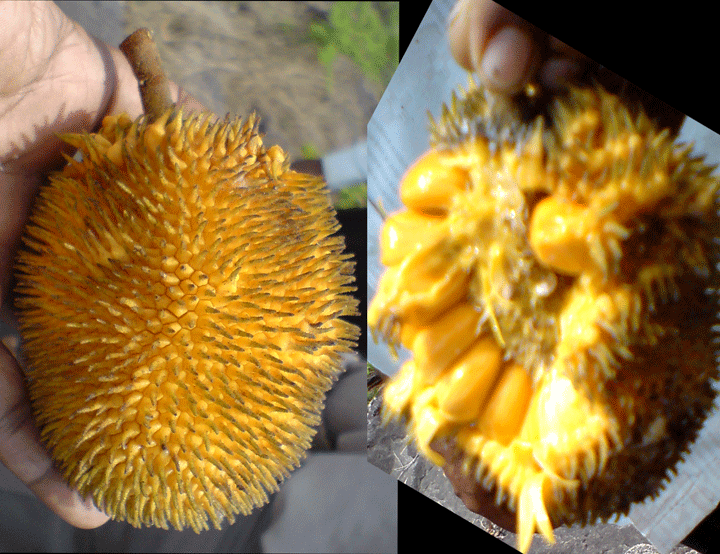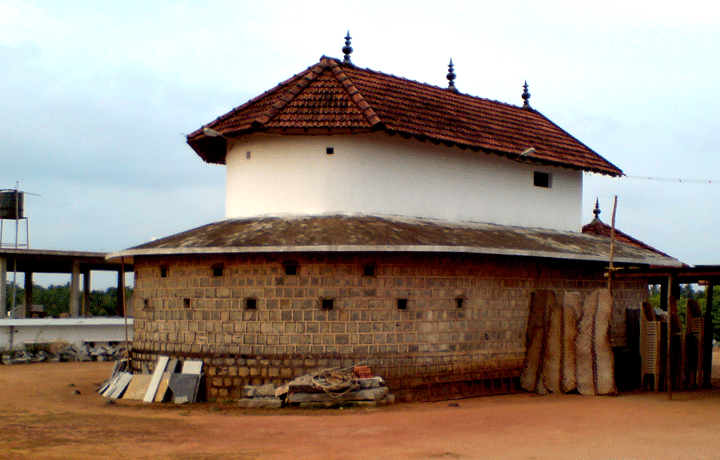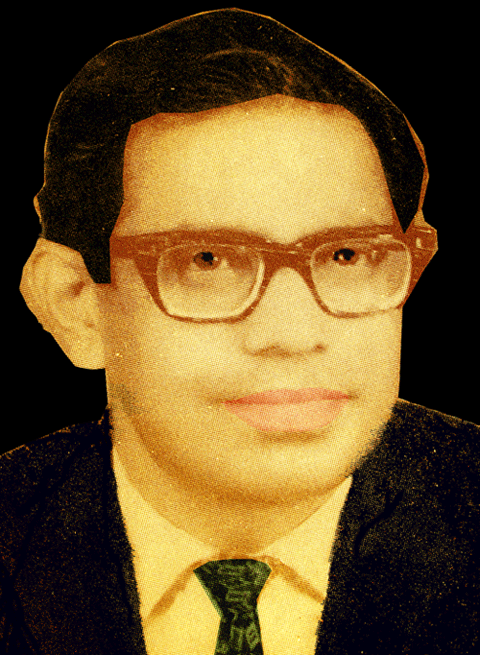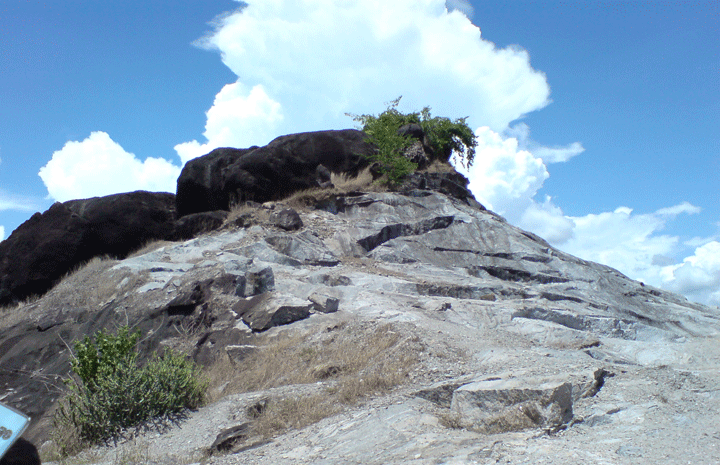
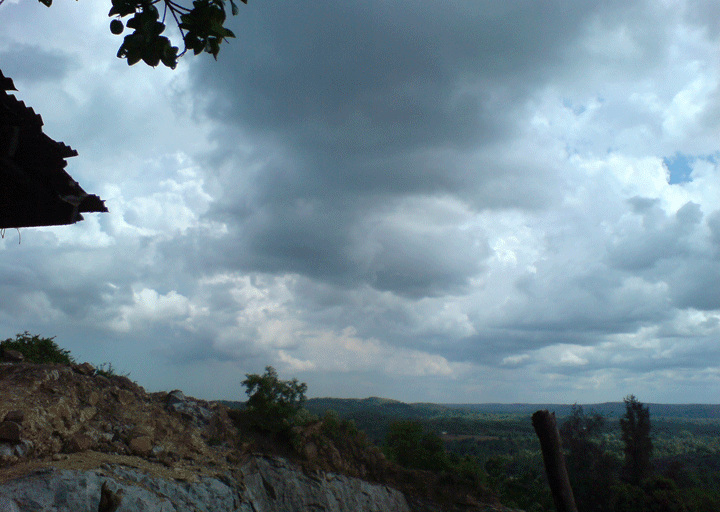
A few of the recognizable vestiges of Buddhism that prevailed in the Karavali / Tulunad region have been traced in some of the earlier posts herein. There may still be skeptics who doubt the extinct evidences of Buddhism in Tulunadu. Apart from the eternal confusion between the parallel paths of Buddhism and Jainism, it may also be true that Jainism that swayed strong influence over Tulunad during the later centuries of the Common Era inadvertently masked the older evidences of existence of Buddhism.
Mayikala
An ancient ‘Mayikala’ devoted to the worship of Gautama Buddha’s mother Mayadevi is traceable in the Mangalore city of early centuries of Common Era. It is existing in the form of an older name of the city, ‘Maikala’ which is still retained and used by Beary merchants as an equivalent name of Mangalore.
Ayikala
The village of Ayikala (usually now pronounced as Aikala) in the northern part of Mangalore taluk. The Aikala village is located east of Kinnigoli town and to north of Kateel the famed temple town.
One neighbouring place forming the junction between Kinnigoli, Aikala and Damaskatte is called Mooru Kaveri (or Mooji Kaveri) poetically referring to three Kaveri(Kayar) trees. Some people have reinterpreted the name as Moodu Kaveri.
The Puttige village that was a power centre of Jain chieftains in the later centuries is to the east of Aikala.
The Aikala village on the Mulki- Kinnigoli - Mudabidri road, is known for granite stone quarries. There is also a temple devoted to Shakti/Durga worship. The traces of theologic evolution of Ayi.>Bhagavathi.> Durga may be relevant here. Original location of Ayikala shrine may be quite difficult to trace now.
Aikala refers to a 'kaLa' (=field; field shrine) occupied by or named after Ay tribes. Ay tribes were a kind of cattle breeders similar to Yeda, Ida or Yedava/Yadava tribes. Kings and chieftains from the Ay tribes were known to have ruled parts of Kerala. It is possible that they settled in parts of Mangalore Taluk like villages of Aikala.
Aihole in Bijapaur district also reminds us of the Ay tribes settled in various parts of Karnataka in the antiquity.
Prakrit pockets in Tulunadu.
Sham Baa Joshi has deciphered the existence of pockets of Prakrit language within southern Karnataka during the period (before 10th Century CE) when Maharastra and Karnataka shared common socio-political territories. It can be recalled that the medieval Kannada text Kavirajamarga (ca. 10th Century) described that Kannada country as the territory stretched between the rivers of Kaveri and Godavari.
Ayikala proves the Sham Baa Joshi’s theory of existence of pockets of settlements that employed pre-Marati Prakrit language in medieval Karnataka. The pocket settlements of Prakrit language speakers, possibly represented by Buddhist and Jain monasteries, existed in ancient Tulunadu also.
One of the possibility is that Buddhists during the early centuries of CE chose the place Ayikala known for large rocky outcrops, with the intention of carving out cave temples or Viharas.
Buddhism was dominant in the West coast of Maharastra,during the historical past, as evident by the presence of numerous cave temples and rock-cut Viharas, carved in basalt rocks . Thus, the free flow and migration of monks along the western coastal track can be visualized.
Alternate explanations
The word Aayi of present Marati language was derived from the older Prakrit language. The ‘aayi’ is equivalent of the word ‘maayi’, the mother.
The word Aikala has several possible alternate explanations.Manjunath has offered some additional details on the word 'ayi'(see 'comments' below).One of the interesting points cited by him is that the word ayi (=mother) has entered Kannada as ta-ayi!
**
Hosabettu Viswanath has explored the word Aikala further.I quote some of his points :
'Aya' or 'Ayi' has so many shades of meaning. While 'aya' means 'adrishta' (fortune/goodluck), it has also means 'a kind or mode of tax' (See p.141 of Tulu Lexicon).So 'Ayakal>Ayikal' may mean a toll gate (Sunkada katte). There must be some historical clue if it is so. Let the locals come forward with the explanation.
Following alternative explanations may also be worth noting:
1. 'Ayi' (Five) is shortened form of 'ayin' in compound words, like 'Ayigeni' (a measure of five spans); 'Ayigoli padpu' meaning 'Panchvati' (a grove of five fig trees); 'Ayineer' (a ritual bath on the 5th day after menstruation); 'Ayinadu' (a province of five villages), etc.
2. 'Ayigal/Ayigulu' means a teacher or preceptor. In olden days such teacher's house is known 'Ayigal Math' and lessons are conducted under a tree. So 'Aigala Katte' may have been shortened as Ayigala>Ayikala.
3. 'Ayi' means ''Sayi', which in English means (to) die or expire. 'Kala' means small shrine for the departed Soul/ Bhoota (Spirit). Thus, it means a monument or five monuments for the Departeed Soul or Spirit.
4. 'Ayyalkal', is a stone representing 'Kshetrapala' of a temple.
**
Ay tribes
On overall analysis it appears that the Ay tribes were a kind of cattle-herders (Yadavas) spread in parts of peninsular India during the early centuries of Common Era. In southern India, Ay tribes were ruling parts of West Coast, especially in Kerala during the early centuries of the Common Era.
Ayikala,(ay+kala) in conclusion, represents a sacred place ('kaLa') of Ay tribes.
For additional data on the words aya,ayi and iya see post 201 on Aya.
®

